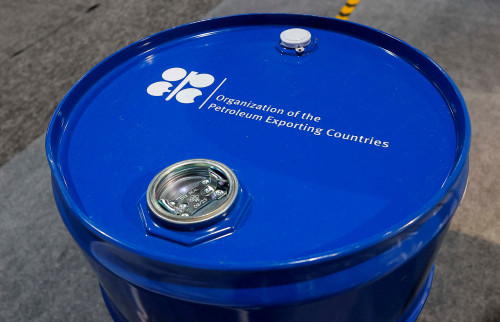By Olesya Astakhova and Ahmad Ghaddar
LONDON/MOSCOW (Reuters) -OPEC+ plans to further accelerate oil output hikes and could unwind its 2.2 million barrels per day of voluntary cuts by the end of October if members do not improve compliance with their production quotas, five sources from the group said.
OPEC+ shocked the oil market in April by agreeing a faster-than-expected unwinding of cuts despite weak prices and demand. The move was designed by OPEC+ leader Saudi Arabia to punish some members for poor quota compliance, sources have said.
The group, which includes the Organization of the Petroleum Exporting Countries and allies such as Russia, agreed another big output hike for June on Saturday, taking the total it plans to release in April, May and June to nearly 1 million bpd.
OPEC+ will maintain the trend and will likely agree in June to release another 411,000 bpd in July, the five OPEC+ sources briefed on the matter said, speaking on condition of anonymity.
During Saturday’s meeting, Saudi Arabia warned others against any non-compliance, one of the sources said, adding that a desire by some members to raise output was also a factor behind the decision to increase production as well as compliance issues.
OPEC, the Saudi government’s communications office, and the office of Russian Deputy Prime Minister Alexander Novak did not immediately reply to a request for comment.
The group will likely approve accelerated hikes for August, September and October, with the idea of unwinding the remainder of a big portion of voluntary cuts if Iraq, Kazakhstan and other laggards do not improve compliance and deliver compensation cuts, the sources said.
If compliance does not improve, the voluntary cuts will be unwound by November, one of the sources said, referring to the 2.2 million bpd portion of OPEC+’s voluntary cuts by eight members.
OPEC+ is still cutting output by almost 5 million bpd and many of the cuts are due to remain in place until the end of 2026. These cuts were agreed in various stages since 2022 to support the market.
In December, OPEC+ agreed to gradually phase out the 2.2 million bpd voluntary part of total cuts by the end of September of 2026 but agreed to accelerate this process in April.
Oil prices fell to a four-year low in April below $60 per barrel on accelerated OPEC+ hikes and as U.S. President Donald Trump’s tariffs raised concerns about a global slowdown.
“The market will take this news negatively, as long as crude exports do not suggest an improved compliance within OPEC+,” UBS analyst Giovanni Staunovo said.
Reuters reported this week that Saudi officials have briefed allies and industry officials that they are unwilling to prop up oil markets with further supply cuts.
Kazakhstan defied OPEC+ this month when its energy minister said he will prioritise national interests over those of the OPEC+ group when deciding on oil production levels. Kazakhstan’s April oil output exceeded its OPEC+ quota despite a 3% fall.
(Additional reporting by Alex Lawler, Maha El Dahan, Yousef Saba and Dmitry Zhdannikov;Writing by Dmitry Zhdannikov and Alex LawlerEditing by Frances Kerry and Helen Popper)


